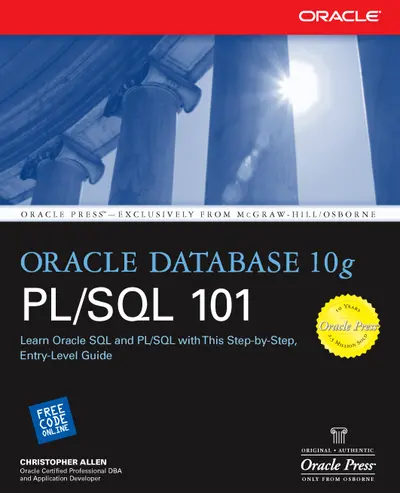My Account Details

ISBN10: 0072255404 | ISBN13: 9780072255409

Step 1 . Download Adobe Digital Editions to your PC or Mac desktop/laptop.
Step 2. Register and authorize your Adobe ID (optional). To access your eBook on multiple devices, first create an Adobe ID at account.adobe.com. Then, open Adobe Digital Editions, go to the Help menu, and select "Authorize Computer" to link your Adobe ID.
Step 3. Open Your eBook. Use Adobe Digital Editions to open the file. If the eBook doesn’t open, contact customer service for assistance.
Publisher's Note: Products purchased from Third Party sellers are not guaranteed by the publisher for quality, authenticity, or access to any online entitlements included with the product.
Get The Ins-and-Outs of SQL and PL/SQL From an Oracle ExpertPerform database functions quickly and easily using the comprehensive information in this step-by-step guide. Oracle professional Christopher Allen begins with database basics and progresses to plain-language explanations and real-world examples of SQL statements and PL/SQL programs. You’ll learn how to manage, query, and manipulate data, use SQL*Plus, create SQL functions, and write practical PL/SQL applications. Review questions, chapter summaries, and hands-on projects will have you understanding and exploiting the powerful features of Oracle Database 10g in no time.
- Create tables, rows, records, columns, and fields
- Store text, numbers, dates, pictures, and soundfiles in tables and columns
- Define, manipulate, retrieve, and delete data, using SQL commands
- Select, sort, and filter records with SQL functions and procedures
- Write SQL commands to declare variables using anchored types
- Use SAVEPOINT and ROLLBACK commands to ensure multilevel undo
- Perform time-based and hierarchical data queries
- Edit and reuse commands in script files, using the SQL*Plus program
- Use PL/SQL views, sequences, procedures, functions, and packages
- Use triggers to automate auditing, security, and maintenance tasks
PART I Database Basics 1 Introduction to Databases 2 Storing and Retrieving Data: The Basics 3 Advanced Data Manipulation 4 Controlling SQL*Plus PART II Advanced SQL 5 SQL Functions 6 Using Indexes and Constraints 7 Other Useful Oracle Techniques PART III Create Programs Using PL/SQL 8 Introduction to PL/SQL 9 More PL/SQL ToolsGlossary of Common Oracle Terms
2 Storing and Retrieving Data: The Basics 3 Advanced Data Manipulation 4 Controlling SQL*Plus PART II Advanced SQL 5 SQL Functions 6 Using Indexes and Constraints 7 Other Useful Oracle Techniques PART III Create Programs Using PL/SQL 8 Introduction to PL/SQL 9 More PL/SQL ToolsGlossary of Common Oracle Terms
4 Controlling SQL*Plus PART II Advanced SQL 5 SQL Functions 6 Using Indexes and Constraints 7 Other Useful Oracle Techniques PART III Create Programs Using PL/SQL 8 Introduction to PL/SQL 9 More PL/SQL ToolsGlossary of Common Oracle Terms
5 SQL Functions 6 Using Indexes and Constraints 7 Other Useful Oracle Techniques PART III Create Programs Using PL/SQL 8 Introduction to PL/SQL 9 More PL/SQL ToolsGlossary of Common Oracle Terms
7 Other Useful Oracle Techniques PART III Create Programs Using PL/SQL 8 Introduction to PL/SQL 9 More PL/SQL ToolsGlossary of Common Oracle Terms
8 Introduction to PL/SQL 9 More PL/SQL ToolsGlossary of Common Oracle Terms
Need support? We're here to help - Get real-world support and resources every step of the way.